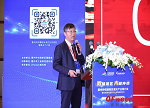7.30-8.1 全数会2025(第六届)机器人及智能工厂展
火热报名中>>
微型激光器加速干细胞研究
公开市场状况
Hamilton Thorne 成立于2011年,并在2008年将其分子诊断部门出售给Thorne Diagnostics。之后的第二年,也就是2009年在多伦多创业板市场上市。
公司最近宣布2011年Q1总销售量140万美元,与上年同期相比增长了22%。尽管如此,2011年Q1数据显示,公司净亏损额为74.6万美元,比去年Q1亏损额度增长了 31%;而公司的亏损都与其产品开发有关。
Spencer解释道,“早期的亏损与我们的分子生物技术的开发有关;这项分子生物技术现在已经接近商品化,并且已经成立了单独的部门。目前的亏损,部分是因为销售和市场规模化、以及扩大基础设施建设来支撑持续增长的规划而引起的。”
此次的扩张计划主要靠2010年下半年公司发行的125万美元的债券支持;公司相关人士指出,发行此次债券是为了加速新产品的开发工作。
但是还需要更多的投资;Hamilton Thorne下一步需要回归到公开市场。Spencer指出,“公司拥有许多金融机构投资者和天使投资人,他们都非常支持公司的发展,从而使得公司的经济状况一直非常良好。此外,我们规划接下来几年在公开市场取得更大的突破。”
原文如下:
Cell biology research, particularly studies of stem cells and fertility treatments, is a numbers game. Laboratories must create, analyze, modify or discard cell cultures containing perhaps millions of cells as efficiently as possible, to avoid bottlenecks in the workflow.
Lasers could have a major role to play, and the use of laboratory-scale sources in cell research programs is set to expand dramatically, according to Hamilton Thorne. The Beverly, Massachusetts, supplier of laser instruments for regenerative medicine and fertility studies believes it has found the best way to put laser tools into the hands of researchers in a practical and economic manner.
“Some lasers are already used in fertility studies, but usually in ways which reduce the fluorescence capabilities of the microscope systems involved,” says Meg Spencer, CEO of Hamilton Thorne. “Lasers have also been applied in the stem cell field, but the size and expense of the lasers involved have inhibited their penetration. We have taken an entirely different approach, by miniaturizing the laser system and mounting it directly inside a 20x or 40x microscope objective. No other company has done this, to our knowledge.”
Ablation and creation
The Hamilton Thorne sources emit at wavelengths around 1460 nm, with slight variations depending on the exact nature of the application. This infrared wavelength is strongly absorbed by the water present in the cell‘s structural features, allowing the laser to selectively ablate unwanted cells or rapidly score cell cultures to demarcate areas of interest, a key step in practical laboratory work.
Other uses can be more subtle. The chances of a successful IVF procedure are known to be improved by the selective and precisely controlled removal of the zona pellucida, a membrane surrounding an immature egg cell, and a laser is an efficient means to create these localized holes. Similarly, researchers wishing to inject stem cells into early eight-cell embryos can use a laser to allow localized access with minimal damage.
“In effect, the laser carries out miniature robotic microsurgery on cells,” is how Spencer describes it. “That basic operation opens up all sorts of applications in cloning, nuclear transfer, ablation, fertility ablation and pre-implantation, which can all be carried out with the same basic laser system.”
This versatility is expected to equate to a substantial potential market for lasers in advanced cell biology, which Hamilton Thorne believes will become a billion-dollar opportunity within five years - with the stem cell sector likely to be a major growth engine.

图片新闻
最新活动更多
-
7.30-8.1火热报名中>> 全数会2025(第六届)机器人及智能工厂展
-
7月30-31日报名参会>>> 全数会2025中国激光产业高质量发展峰会
-
7.30-8.1马上报名>>> 【展会】全数会 2025先进激光及工业光电展
-
免费参会立即报名>> 7月30日- 8月1日 2025全数会工业芯片与传感仪表展
-
精彩回顾立即查看>> 锐科激光《锐见·前沿》系列前沿激光应用工艺分享
-
精彩回顾立即查看>> 维度光电·引领光束质量分析应用全新浪潮【免费下载白皮书】
推荐专题







 分享
分享




























发表评论
请输入评论内容...
请输入评论/评论长度6~500个字
暂无评论
暂无评论